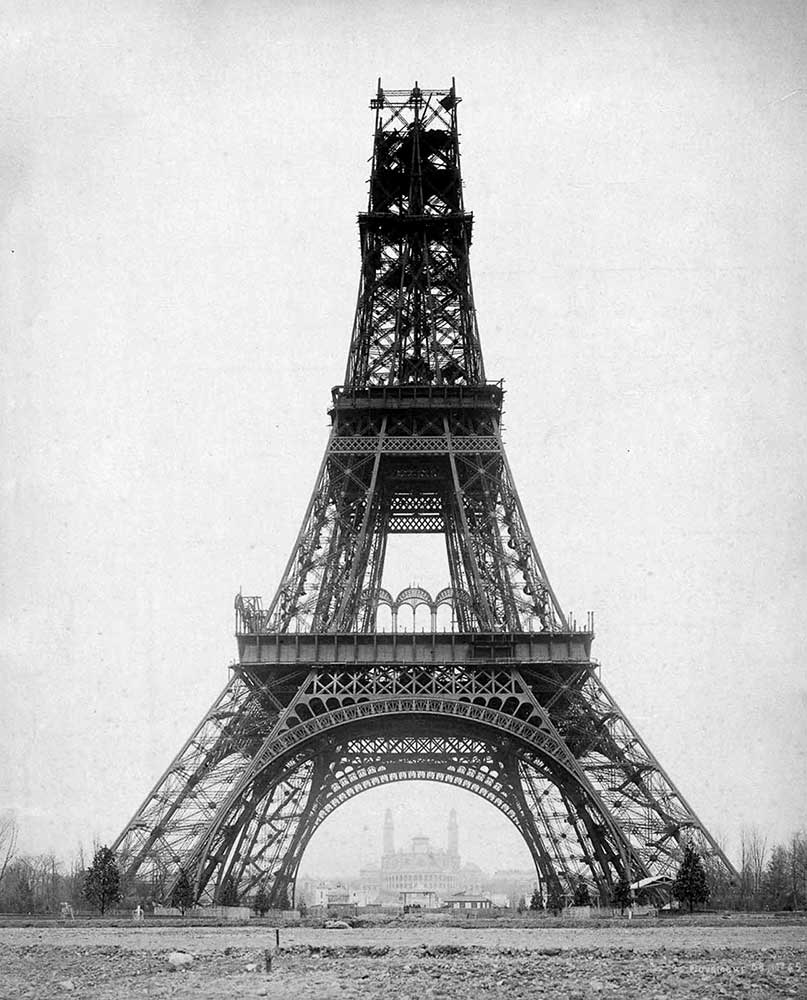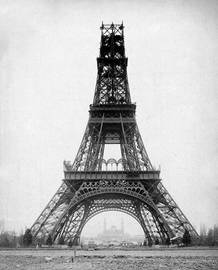
SUMMARY
- Designed by Gustave Eiffel: The Eiffel Tower, crafted by the renowned engineer Gustave Eiffel, was a highlight of the 1889 Paris World Fair and showcases his expertise in metal frameworks.
- Remarkable Construction: Completed in 22 months with no reported injuries, the tower’s construction was a notable achievement for its time, using robust ‘Puddle Iron’ for durability.
- Iconic Structure and Functionality: Standing at 986 feet as the tallest building in the world until 1930, the Eiffel Tower features three visitor floors, with the top accessible only by stairs.
- Cultural and Artistic Impact: The tower inspired numerous artworks, including those by Robert Delaunay, and will be given a golden paint makeover in 2024 to celebrate the Paris Olympics.
The Eiffel Tower is the ultimate symbol of Paris, towering over the city with its distinctive lattice structure that curves upwards towards the sky. Once the tallest building in the world, the Eiffel Tower became a symbol of ingenuity and modernity during the 20th century. Since then, it has been the inimitable, historical icon of Paris, attracting millions of tourists every year. It can also be seen from much of Paris, making it an important emblem for the people who live there. We take a look through some of the most fascinating and unusual facts about the Eiffel Tower to celebrate this marvel of architectural engineering.
1. It Was Designed by Gustave Eiffel

The Eiffel Tower was designed by the esteemed engineer Gustave Eiffel, who ran a busy workshop in Levallois Perret, near Paris. His engineering company specialized in metal frameworks, many of which featured the same distinct lattice metalwork seen in the Eiffel Tower. Some of his most notable constructions include the Porto Viaduct in Portugal, the Viaduct du Garabit in France, and the metal framework for the Statue of Liberty. Eiffel won an open competition to design the Eiffel Tower, which was to be the crowning glory during the Paris World Fair of 1889.
2. It Took 22 Months to Complete

The construction of the Eiffel Tower took around 22 months to complete, a remarkable feat for a time when workers had far fewer of the machines and tools we rely on today. Miraculously, given how high workers had to climb, no one was killed or hurt during the tower’s construction.
3. The Eiffel Tower Is Made of Iron

Gustave Eiffel had a reputation for producing iron monuments that could withstand all weather conditions, and the Eiffel Tower was no exception. He used a particular type of iron for the tower called ‘Puddle Iron’, derived from the Pompey Forges in the East of France. The name of this iron comes from the refining or ‘puddling’ process the metal goes through, which eliminates excess carbon after melting the ore. Gustave argued this type of iron was the most robust building material in the world.
4. The Eiffel Tower Has Three Floors

The Eiffel Tower has three floors in total, all of which are open to visitors. Visitors can access the first two floors by stairs and an elevator, while they must climb steps to reach the top level or summit. The first two floors feature restaurants and cafes, while on each level there is an observational deck for looking out into the city of Paris from on high.
5. It’s as heavy as an Entire Freight Train

Perhaps unsurprisingly, the weight of the Parisian tower is impressively high, coming in at about the same weight as an entire freight train. In total, estimates suggest it is around 10,100 tons. The metal framework alone weighs around 7,300 tons, while the thick layer of protective paint on its surface is 60 tons!
6. Robert Delaunay Created Countless Paintings of the Eiffel Tower

Cubist and Opphist artist Robert Delaunay lived most of his life in Paris and painted countless paintings of the Eiffel Tower. For Delaunay and his contemporaries, the tower represented the pinnacle of achievement in society. His works based on the tower span several years and styles, starting with Cubism and later returning to painting the tower in the Orphist style.
7. The Eiffel Tower Has to be Repainted Every 7 Years

Under Gustave Eiffel’s strict instruction, the Eiffel Tower must be repainted with a thick layer of protective paint every 7 years, to protect the iron from the corrosive effects of the weather. The Parisian government has stuck to these conditions over the past century, which is one of the reasons why it still appears in such pristine condition today. Over the years, the tower was painted in various colors, from the original reddish-brown shade to bright yellow. In 1968, a specially mixed paint shade called “Eiffel Tower Brown”, was adopted by the French, which is still in use today.
8. Artists Staged a Protest About the Eiffel Tower

Parisians did not universally accept the tower in its day – in fact, a group of 300 artists and academics staged an angry protest calling for its immediate removal, referring to the tower as “…the useless and monstrous Eiffel Tower,” likening it to a “gigantic black factory chimney.”
9. It Has a Limited Visitor Capacity

The Eiffel Tower might be a hefty monument, but it has a limited visitor capacity of 5,000, split over different levels because of the tower’s tapered shape. The first and largest level can carry the weight of 3,000 people, the second level is narrower and can hold around 1,600, while the much smaller top level can house only 400 people.
10. It Was Once the Tallest Building in the World

The Eiffel Tower was part of the ‘race to the sky’ in the late 19th century, and it hit the record for the world’s tallest building in 1889, at 986 feet. However, it only stayed in the top spot for four decades, after which time both the Chrysler Building, followed by the Empire State Building set new records.
11. Smaller Replica Eiffel Towers Exist Around the World

The tower is so famous today that a series of small replica towers of the same design exist in cities around the world. These include Las Vegas, Tokyo, Brazil, Riga, and Sydney.
12. The Eiffel Tower is Going Gold Ahead of the 2024 Olympics

In 2024, they revamped the Eiffel Tower with a golden paint hue to coincide with the Paris Olympics. The repainting job will be one of the tower’s most extensive revamps in 130 years.












